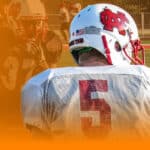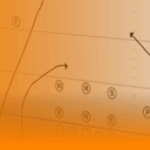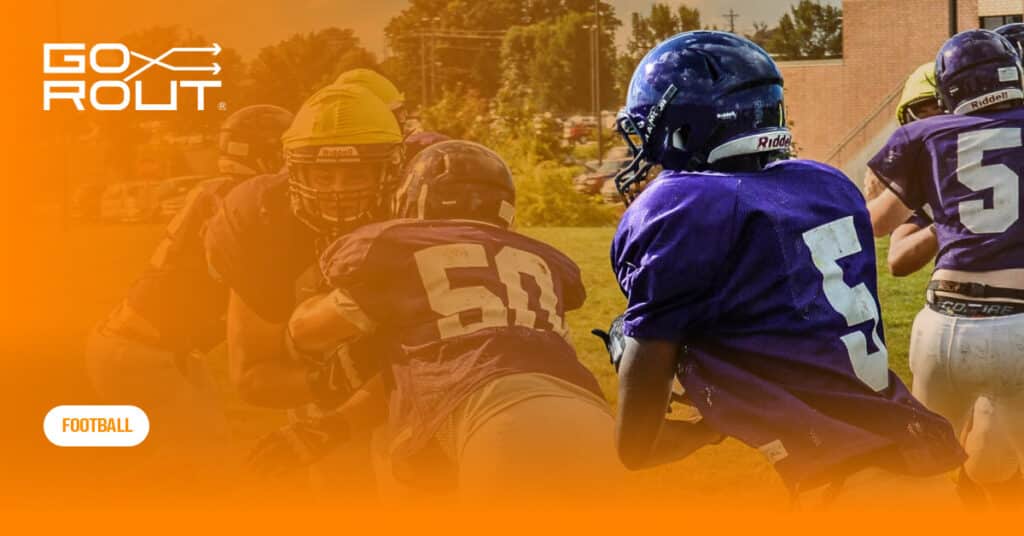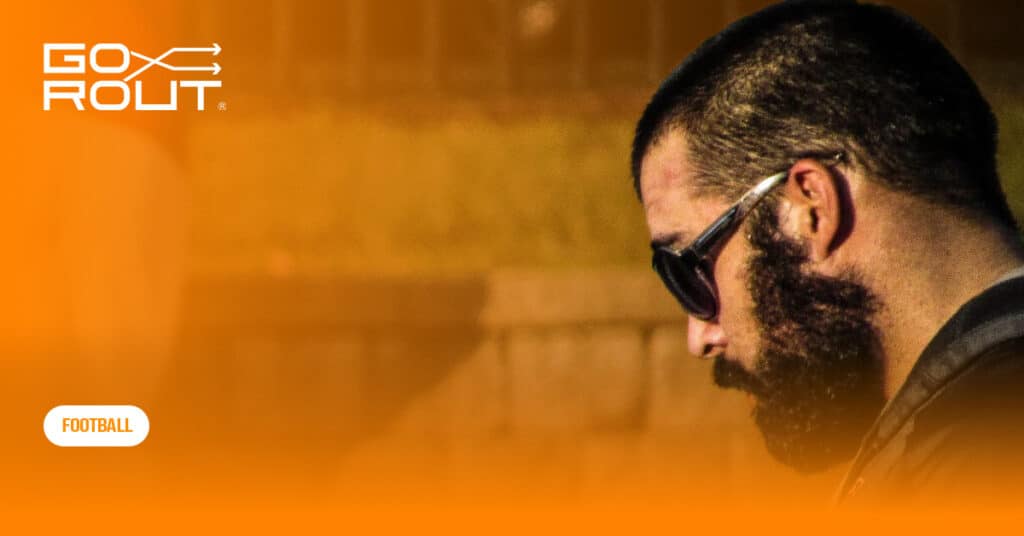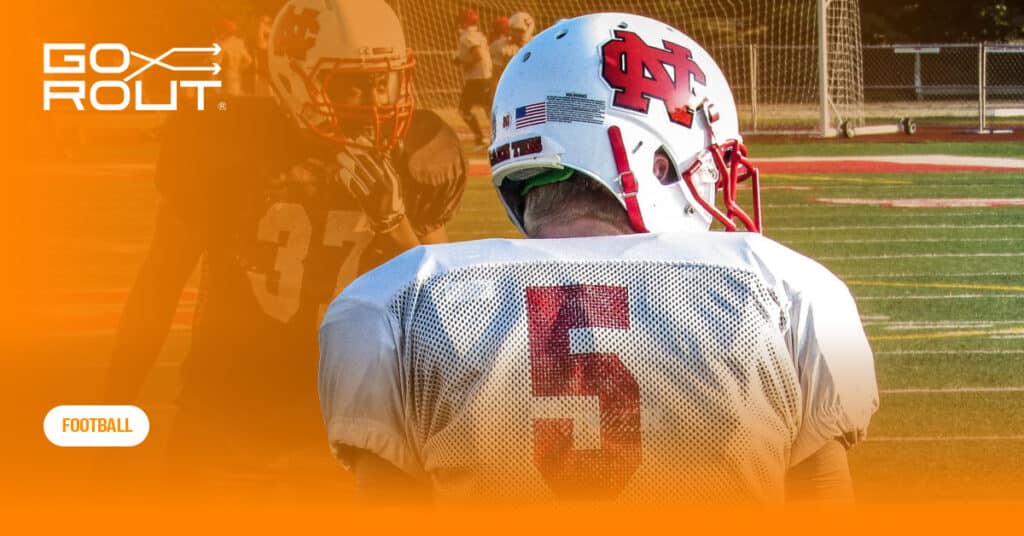Football Coach Hand Signals: History, Tips and Digital Alternatives
Reading Time: 11 minutes
Reading Time: 11 minutes
Football coaches use hand signals to communicate plays faster to multiple players, making real-time adjustments without huddling. As the game speeds up and stadiums get louder, coaches rely on these silent methods more than ever.
You’ve probably seen coaches on the sidelines waving their hands or holding up picture boards during games.
These aren’t random gestures. They’re planned signals that tell players exactly what play to run. From simple hand movements to complex picture combinations, these signals help your team stay one step ahead of the defense.
This guide will walk you through everything about football coach hand signals. You’ll get a sense of how they started, how coaches create and teach them, and what challenges come with using them during a season.
We’ll also cover how digital alternatives, like GoRout Scout and Gridiron, are changing the way teams communicate and perform on game day.
The Basics Of Silent Communication In Football
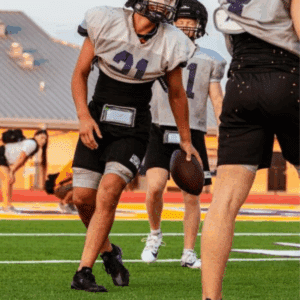
Silent communication in football lets coaches send plays to players without speaking. It becomes vital when crowd noise makes verbal calls impossible.
Teams use hand signals, body movements, and visual cues to share info quickly during games.
Why teams use silent communication
- Stadium noise drowns out verbal calls
- Prevents opponents from hearing play calls
- Speeds up game tempo
- Reduces confusion on the field
Your coaching staff creates specific signals using different body parts. The left hand might signal the formation, while your right hand shows the play type. When you point with your fingers, it could mean the direction of the play.
Common signal methods
- Open hand against your chest
- Fist near your shoulder
- Arms crossed over your head
- Touching your nose or mouth
Players watch for these signals before each play. Your motion needs to be clear and consistent so players recognize it instantly.
For example, you may indicate by tapping your chest twice and pointing to the ground that players should run a specific route. By making sure your players understand hand signals when teaching, they’ll recognize them during the game. The halftime break gives coaches time to review signals and make adjustments.
Teams practice these signals daily, so players react without thinking. Each signal has a meaning that your team learns through repetition.
History And Evolution Of Football Coach Hand Signals
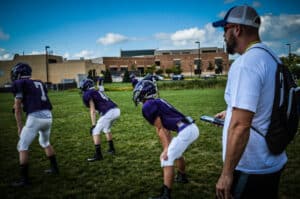
Football coach hand signals started around the mid-20th century. The evolution began with Paul Brown using basic sign language to communicate directly with their quarterbacks.
This simple system worked when offenses moved slower and used more huddles. As spread offenses became popular in the 2000s, hand signals exploded in use. Teams needed faster ways to communicate without stopping play.
Chip Kelly and Oregon helped make hand signals mainstream starting in 2008. They showed how quick communication could give offenses a big advantage.
Modern hand signal systems now use multiple coaches giving different signals at once. You might see 3-5 coaches signaling during a single play.
Some coaches use “dummy” signals to confuse the defense. They give fake signals while the real play caller uses different gestures.
Gallaudet University, a school for deaf students, has used complete hand signal systems for offense, defense, and special teams for decades. Their success proved that silent communication could work for entire teams.
How Football Coaches Assign Signals
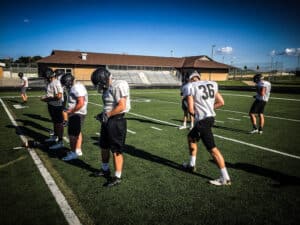
Coaches assign signals by giving each part of a play call a specific meaning tied to visual cues. Every position group gets different signal responsibilities based on its role in the play.
For example, when using a picture board, formation signals may go in the top-left corner. Protection calls may appear in the top-right section. Running back assignments might take the bottom-left spot while passing concepts fill the bottom-right area. All coaching staffs use different methods to create hand signals and picture boards, so it varies by coach and team.
Your coaching staff can use creative connections between images and plays.
Some coaches assign three plays at once using different colored backgrounds or borders around pictures. It lets you change the play call quickly based on what the defense shows.
Dummy signals confuse opposing scouts. You might assign meaningless pictures alongside real ones to hide your true system. Players learn which coaches give real signals versus fake ones.
Position coaches often handle their own signal assignments. The offensive coordinator calls the main concept while the line coaches signal protection schemes separately. It speeds up communication to multiple players at once.
Football coaching software like GoRout helps organize signal assignments digitally. You can track which signals work best and update them between games.
Types Of Football Signals By Unit
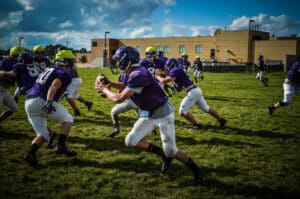
Football coaches use different hand signals for each unit on their team. The offense, defense, and special teams all need their own unique communication system to work effectively.
Offensive signals
Your offensive signals help coordinate complex plays between the quarterback and receivers. Coaches often use multiple people giving signals to confuse the defense.
Common offensive signal areas include:
- Formation calls that position players in gun or spread alignments
- Route concepts that direct receivers to specific areas
- Protection schemes that help the offensive line block
- Run or pass decisions based on defensive alignment
The quarterback reads these signals before each play. Some teams use the same play call with different signals to keep defenses guessing.
Defensive signals
Your defensive unit needs quick communication to match offensive formations. Football sideline signs help coordinate coverage and pressure packages.
Defensive signals typically cover:
- Personnel packages that match offensive formations
- Coverage calls for the corner and safety positions
- Blitz packages that bring extra pass rushers
- Run fits that assign gap responsibilities
Defensive coordinators must get signals to all eleven players quickly. Each position group often has specific signals for its responsibilities.
Special teams signals
Your special teams units use simpler signals than offense or defense. These focus on basic formation changes and coverage adjustments.
Special teams signals include:
- Return directions for kick and punt coverage
- Blocking schemes for return units
- Formation adjustments based on field position
- Fake or regular play calls
The ball placement and field position often determine which signals coaches use during special teams plays.
Teaching Football Players Hand Signals
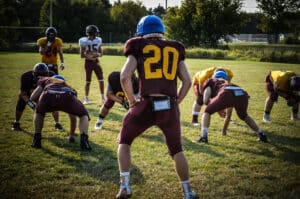
Teaching hand signals starts with simple gestures that players can learn quickly. Begin with basic signals for common plays and formations. It helps your team build confidence before moving to complex signals.
Start with position groups separately. Each group learns the signals that apply to their role first. Your offensive line learns blocking signals while receivers focus on route changes. It keeps things simple for each player.
Practice signals daily during warm-ups. Spend 5-10 minutes each practice reviewing signals without the ball. Players need repetition to make the signals automatic. Your senior members can help teach younger players the system.
Use memory tricks to help players remember signals. Connect each signal to something familiar. A pointing finger might mean “go,” while a fist means “stop.” These connections help kids remember under pressure.
Practice from the sidelines to simulate game conditions. You and your coaching staff should stand where you normally would during games. It helps players learn to look for signals in the right spots.
Test your players regularly without telling them. Call out signals during practice and see if everyone responds correctly. Players who struggle need extra help from teammates and coaches.
Keep a signal chart in the locker room where players can study. Visual reminders help players review between practices. Update the chart when you change signals to avoid confusion.
Your ability to teach signals effectively depends on patience and consistency. Start slow and build up speed as players master each signal.
Challenges And Risks Of Football Coaches Hand Signals
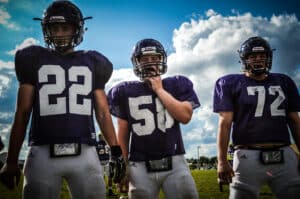
Hand signals create security risks and communication failures that can cost you games. Your signals become obvious patterns that the other team can study and decode through video analysis.
Signal theft represents your biggest threat. Opposing coaches may catch on to your signals throughout the game. They may also assign scouts to break your communication codes during important matchups.
Weather conditions make signals harder to see. Rain, snow, and bright sunlight can block your players’ view of the sideline. Your quarterback might miss critical play changes in bad conditions.
Poor lighting affects hand signals. Night games and stadium shadows make it harder for players to see your signals clearly.
Timing issues hurt fast-paced offenses. Players looking to the sideline can delay the snap count. It gives your opponent more time to read formations and adjust their defense.
Multiple signalers can confuse your players. When you use dummy coaches giving fake signals, your own team might read the wrong person. It leads to broken plays and turnovers. Your signals become predictable over time.
Smart defensive coordinators notice patterns in your hand movements. They start calling out your plays before you run them.
Improving Security of Football Coach Hand Signals
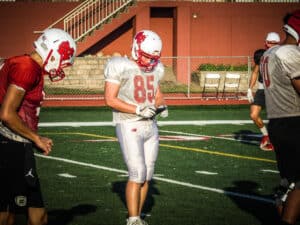
Teams face constant threats from opposing coaches trying to stop sign-stealing during games. Your signals need protection, but you can’t sacrifice effectiveness.
Encryption methods
Change your signal meanings between drives or quarters. Mix in dummy signals with real ones to throw off anyone watching from the other side.
Set up multiple signal callers to split the opponent’s attention. It’s a headache for them and keeps your team a step ahead.
Visual protection strategies
- Wear high-contrast clothing so your players spot signals fast
- Position several coaches using different hand gestures
- Use your body to block the opponent’s sightlines
- Put decoy signalers on the sideline
Advanced security techniques
Rotate through different sign systems during the game. Train your players to watch for the “hot” signaler and ignore decoys. Modern coach-to-player communication systems like GoRout offer encrypted digital alternatives, shutting down visual stealing completely.
Timing and positioning
Send football sideline signs only when your players are actually looking. Don’t repeat the same gesture over and over. Move your signaling coach along the sideline between plays. This small change can make a big difference.
Background noise reduction
Keep signalers away from busy sideline areas. Use solid-colored backgrounds behind your signaling coach if you can swing it. Don’t signal near cheerleaders or the band. Those distractions make it tougher for your team to focus.
Counter-intelligence
Study how opponents try to steal signals. Send out some false information early in the game to test what they pick up. Save your most important encrypted signals for the big moments when everything’s on the line.
When To Use Hand Signals Vs. Verbal Calls In Football
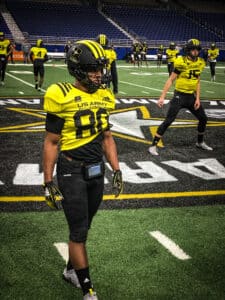
Use hand signals when crowd noise makes it impossible for players to hear verbal calls clearly. Stadium noise often drowns out shouted instructions, so visual communication ends up being your best option.
Hand signals shine for fast-paced, no-huddle offenses where speed is everything. You can get the message to several players at once without huddling up.
Distance matters, too. Hand signals reach players across the field better than your voice ever could. Your quarterback can see signals from the sideline even when they’re out of earshot.
Weather conditions play a part. Rain, wind, and cold can muffle sound, but clear hand signals still get through.
Verbal calls work better for complex play adjustments that need a little extra explanation. Your players can ask questions and make sure they’re on the same page.
You should use both methods together for the best results. Start with hand signals for the base play, then add verbal details if you need to.
Think about your team’s experience. Newer players usually need to hear things explained, while veterans can rely more on visual signals they’ve practiced.
Balancing Tradition With Innovative Football Technology

Football teams have a tough job. They have to respect the tradition of the sport, but also use new technology to get an edge.
Hand signals and picture boards sum up this balancing act. What started as simple gestures has evolved into complex systems that marry old-school coaching with modern efficiency.
The old ways still matter because they build chemistry and sharpen decision-making. Modern coaching combines:
- Hand signals for quick plays
- Electronic communication for complex calls
- Video review to refine strategy
- Digital tracking for performance metrics
Video analysis is now standard for reviewing hand signals and communication patterns. Coaches review game footage to improve their signaling and spot weaknesses.
Wearable technology in sports delivers real-time data that helps coaches make better communication calls during games.
Sports coaching technology keeps advancing fast. Smart coaches adapt, picking up new tech but keeping what works.
Your success really depends on picking tools that fit your players and your coaching style. Usually, the best approach is a mix of proven methods and carefully chosen new tech.
How GoRout Replaces Football Coach Hand Signals
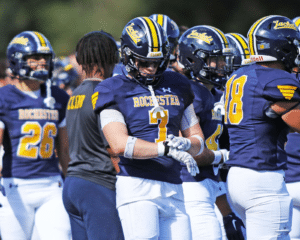
GoRout takes traditional hand signals out of the equation with an advanced football play-calling system.
It lets you build your football playbook via a web app and use the mobile app to send digital play calls right to players through wearable devices.
The Scout system handles practice, while Gridiron delivers plays during games.
GoRout Scout
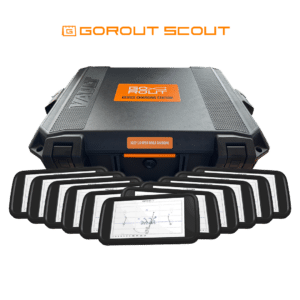
GoRout Scout swaps out hand signals at practice for football play call wristbands and belt packs that show play cards instantly. You upload your plays as images or PDFs, then send them to every player with a single button press.
This setup works without WiFi, using cellular tech. Using the football practice device, players see the same encrypted play they’d get on a card, but without squinting at the sideline or missing a signal.
Key Scout features:
- Instant play delivery to 7-16 devices
- Works in any weather
- Uses your existing play designs
- No internet setup needed
Scout speeds up practice by cutting out the time spent on hand signals or paper cards. You can run scout team plays faster and squeeze in more reps.
New players pick things up quicker since they get clear visual plays instead of having to decode tricky hand signals. Freshmen can even review plays on the device like digital flashcards.
Check out the testimonials and case studies to learn more.
GoRout Gridiron
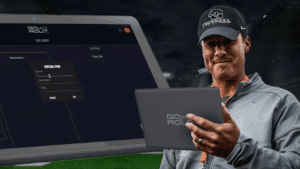
GoRout Gridiron brings digital play calling to live games, swapping hand signals for secure wearable displays. Players get plays instantly on their wristbands, eliminating the need to look at the sideline for cues.
The Gridiron system lets you expand your play-calling system since players get private, direct communication. You can use more complex plays without worrying about opponents reading your signals.
Game day advantages:
- Eliminates sign-stealing risks
- Faster play calling under pressure
- Multiple players get plays at once
- Secure, encrypted communication
The devices hold up during full contact and survive the rough stuff on game day. Your quarterbacks and key players see plays clearly, even in stadiums too loud for hand signals.
Gridiron cuts down on miscommunication that causes penalties or blown plays. Players execute with confidence since they know exactly what play was called, no guessing at half-seen signals.
Conclusion On Football Coach Hand Signals
Football coach hand signals started as simple gestures, but now they’re clever systems that give your team a real edge. These silent cues let you call plays fast and keep the other side guessing.
Modern hand signals serve three key purposes:
- Speed up play calling without huddles
- Confuse defensive coordinators
- Maintain communication in loud stadiums
You can use hand signals at any level of play. Start basic, maybe just formations, and add more as your players get comfortable.
Digital alternatives are popping up everywhere. Still, traditional signals matter, since they work instantly and don’t rely on gadgets that can glitch.
Practice matters. Players need to see the signals over and over until they react without thinking. It’s smart to mix in some fake signals too, just to keep opponents off your trail.
The future includes old-school signals supported with digital tech. The best coaches use both, picking whatever works for their team.
For coaches looking to modernize their play-calling systems, GoRout offers cutting-edge solutions that complement traditional hand signals.
GoRout Scout helps streamline practice communication, while GoRout Gridiron delivers real-time plays directly to players through wearable devices during games.
These systems have already proven effective at the college level and are now available for high school programs.
If you want to give your team a competitive advantage with faster, more efficient communication, get a quote and see how GoRout’s solutions can fit your program.


